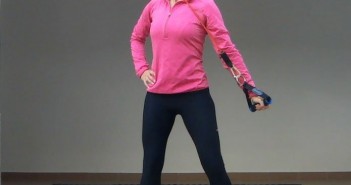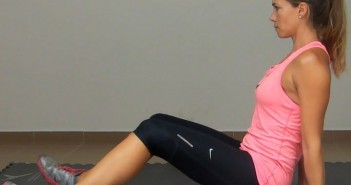The Shoulder Retraction Exercise is a great way to build stabilising strength and mobility in your shoulder blades, thus enabling more efficient and consistent movement in your golf swing and helping to prevent injury.
The Shoulder Retraction Exercise forms part of the Golf Injury Prevention series of innovative and dynamic exercises that will help to protect you from pain and injury by building strength and stability around your most vulnerable areas, while improving mobility, balance and joint function.
Steps
- Start by standing in perfect posture, with your arms raised at shoulder-height straight in front of you.
- Slowly push your hands as far away from you as possible by pushing your shoulder blades apart, away from your spine.
- Keeping your arms straight, slowly bring your hands towards you by squeezing your shoulder blades together, towards your spine.
- Repeat for the desired number of repetitions.
The movement is initiated entirely by your shoulder blades, not your spine.
Keep your torso stationary and your back straight.
Don’t shrug your shoulders, keep them down, away from your ears throughout the movement.
You should feel it working your shoulders and upper back.
Variation
There are a number of other shoulder blade mobility and stability exercises in the Golf Loopy Train like a Champion System, you can see them all by clicking here.
If you have any questions or comments about this or other articles on Golf Loopy, please send us an email.
You May Also Like…
Golf Performance Programmes – the most effective golf-specific fitness regimens on the planet, guaranteed to make you a better golfer!
There are a number of other golf-specific injury prevention exercises in the Golf Loopy Train like a Champion System.
The Golf Loopy Perfect Warm Up, an exercise routine that has been scientifically designed to prepare your mind and body for playing golf to the best of your ability in just 7 minutes.
Introduction to the Swing like a Champion System.
Golf Anatomy and Kinesiology, a collection of articles describing the roles of the muscles involved in the golf swing.


